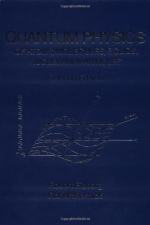|
This section contains 254 words (approx. 1 page at 300 words per page) |
Intact cells are comprised of a nucleus and cytoplasm. A nuclear envelope encloses chromatin, the nucleolus, and a matrix which fills the remaining space. The chromatin consists primarily of the genetic material DNA and histone proteins. The nucleolus is a small structure within the nucleus which is rich in ribosomal RNA and proteins. Nucleoli are associated with protein synthesis and enlarged nucleoli are observed in rapidly growing embryonic tissue (other than cleavage nuclei), cells actively engaged in protein synthesis, and malignant cells. The nuclear matrix contains mainly proteins.
The genetic instructions for an organism are encoded in nuclear DNA. Hence, when genetic replicates are desired, they are cloned by nuclear transplantation. Frogs were the first creatures produced by cloning and this was accomplished in Philadelphia in 1952. More recently, sheep (Dolly) and other creatures have been produced by cloning nuclei from adult animal donors. The cloning procedures for frogs or mammals consists of insertion of a nucleus into an egg that has been deprived of its own genetic material. The reconstituted egg, with a new nucleus, develops in accordance with the genetic instructions of the nuclear donor.
There are, of course, cells which do not contain the usual nuclear structures. Embryonic cleavage nuclei (cells forming a blastula) do not have a nucleolus. Obviously, they have the genetic competence to produce nucleoli when needed because gastrula and all later cells contain nucleoli. Mature red blood cells, erythrocytes, in most mammals have lost their nuclei. Nuclear loss does not preclude the competence to carry oxygen.
|
This section contains 254 words (approx. 1 page at 300 words per page) |


